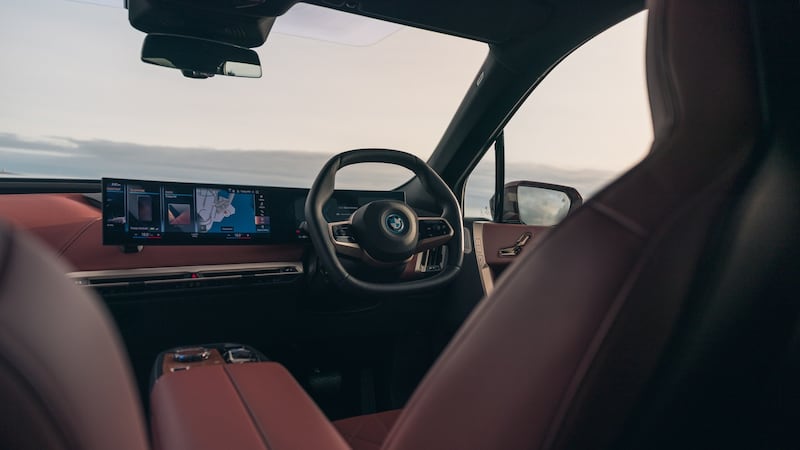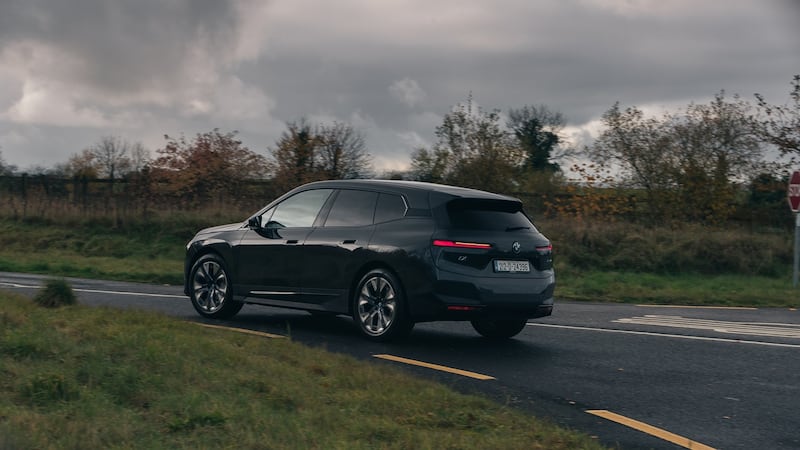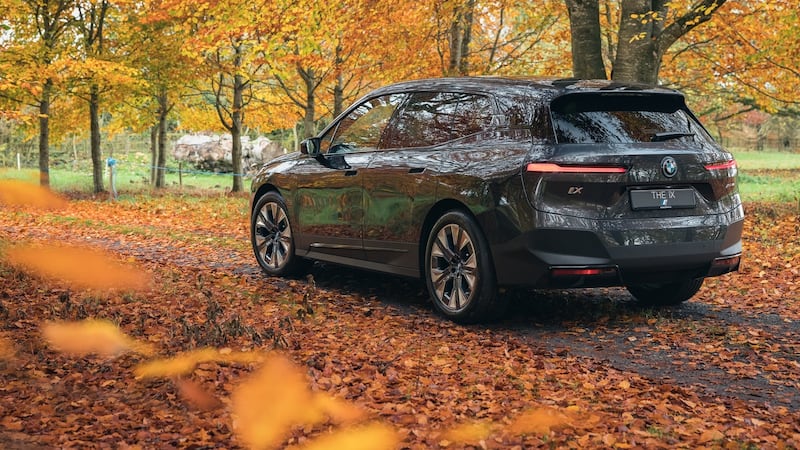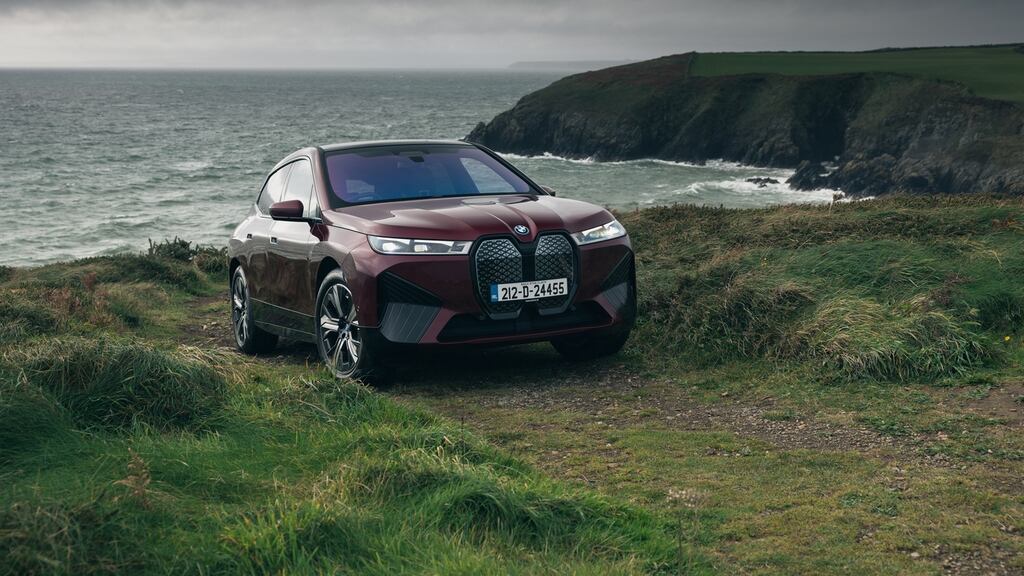The good news: BMW’s new bucktoothed electric crossover looks much better in the metal than it does in either photos or concept form.
Colour is important with the iX. Opt for darker shades and the grille subtly blends into the car. Choose a more vibrant colour and that big grille and small lights look like a squinting Bugs Bunny after spotting Elmer Fudd’s shotgun.
In fairness, the iX’s front nose is better looking than Tesla’s pinched slab of bodywork on the Model X and it’s there for more than aesthetic show. Quite a lot of the new tech – related to driver safety and future self-driving systems – is housed behind those front teeth.
Speaking to BMW iDesign boss Kai Langer last year, he explained: "In the past, these grilles were needed to deliver air to the combustion engines, but now its meaning is due to all the high-tech sensors and elements that are coming into the car behind this protection shield."


BMW bills the iX as an SUV, but in reality it sits lower to the ground than the X5. It's perhaps closer to what Mercedes-Benz referred to as an SUV tourer when it launched its now abandoned R-Class back in 2005.
If people carrier wasn’t such a derogatory term in the motoring world these days, this would be BMW’s high-end family entrant, and might even come fitted with seven seats.
While it may not be as tall as some SUVs, it's longer than most of them, and that pays off in interior space. By opting for five seats over seven, this BMW has legroom front and rear. That said, at 500 litres, the boot is noticeably smaller than either the X5 (150 litres more) or rivals like the Audi e-Tron (160 litres more).
It’s worth noting that BMW is pushing hard to improve its environmental credentials, so there’s a lot of recycled materials used in the cabin, though they certainly haven’t compromised on the finish and it’s still very opulent, as you’d expect for this price. The cushioning on these seats make those in the flagship 7 Series seem like park benches.
The touchscreen controls are sharp and reactive, making the rotor dial on the driver armrest rather redundant, while the voice activation system is the best BMW has delivered to date. The iX is immensely comfortable and the ride quality is sublime.
The basic laws of physics suggest this 2.5 tonne block of metal should be a lump to drive. Yet it handles like a car half its size.
The iX is relatively fast, capable of seeing off its Audi and Mercedes rivals in a 0-100km/h dash, and while it doesn't match the Tesla Model X's 3.9 seconds pace, the iX has better handling and steering feel. Tesla may have the edge in a straight line drag race but throw in a few bends and the BMW comes into its own.

Another really impressive feature is the iX’s ability to lay down all that power on to the tarmac without wheelspin. The entry level iX 40 puts out 630Nm, which is more than a BMW M3. It’s one thing to pull off from the lights with the tyres screeching in an M3, another when it’s a large family SUV. So BMW’s engineers have created a hugely impressive traction control system that lays the maximum power on to the road without any of the drama.
Unlike some rivals, the power is also spread across the speed range. Some EVs tend to deliver an initial punch of power that noticeably tapers off when you approach triple digits on the speedometer. The iX, however, has plenty of overtaking zip left when you are in the region of the 120km/h motorway limit.
Getting down and dirty in the data, the iX comes with two power options: the iX 40, fitted with a battery pack putting out 71kWh of useable power, delivers 326hp from its two electric motors while the iX 50 with a useable power output of 105kWh puts out 523hp.
The former has an official range of up to 414km and a 0-100km/h time of 6.1 seconds. The latter boasts a range of up to 613km, and a 0-100km/h time of 4.6 seconds.
That extra range and performance comes at a price: while the starting price of the iX 40 version is a hefty €85,815, the iX 50 version adds at least another €27,000. Feel free to gulp.
When it comes time to recharge, the ability to scoop in electricity at rates up to 150kW from DC chargers means the iX 40 claims it can charge from 10 to 80 per cent in 31 minutes on the likes of the ESB’s 150kW ultra-rapid chargers. Back on a regular 11kW home charger, you are looking at under eight hours for full charge. For those who opt for the larger battery in the iX 50, it can take a charge at rates of 200kW, so you can get from zero to 100 per cent in just 35 minutes on an Ionity charger, for example.
BMW’s iX is aiming for opulent comfortable people-carrying transport and in that regard it delivers on the promise. There’s no issue with range anxiety, nor with criss-crossing the country in this car when it comes to driving dynamics and comfort.
With its supple ride, raft of safety systems, smooth handling and silent cabin, the iX asks very little of the driver or passenger. It might not be the most engaging BMW on the market, but then those looking for that sort of fun wouldn’t opt for a 2.5-tonne, 5m-long load-lugger like this in the first place.

Up against similar-sized all-electric crossover SUVs, however, the iX is more than capable of holding its own. It’s expensive, but it’s on a par with its premium German rivals – the Audi e-Tron and Mercedes-Benz EQC.
Love or loathe its look, this BMW makes a strong statement about the company’s priorities when it comes to larger family cars: comfort and refinement mixed with handling prowess.
At the top end, the iX 50 version sees off the challenge of the Tesla Model X, while the iX 40 version can mix it with any of its German rivals.
Before signing on the dotted line, however, I’d suggest a test drive in another all-electric BMW.
As if electric car buyers weren’t befuddled enough, BMW recently launched a revamped version of its all-electric iX3. Based on the X3 crossover, it does belong in a class below the new iX and doesn’t boast all of the cutting edge tech as its slightly bigger brother. Yet it’s still an all-electric family-sized five-seater SUV and offers better range (460km) than the iX 40, while starting at €74,815. That €11,000 price difference for an electric car that’s just as practical and premium is hard to ignore.
BMW iX 40 M Sport: the lowdown
- Power Two electric motors (one on each axle) powered by a lithium battery with 71kWh of useable power, delivering a combined 320hp and 630Nm of torque
- 0-100km/h 6.1 seconds
- Range (WLTP) 425km
- Consumption (WLTP) 22.5 kWh/100km
- Price as tested €98,656 (iX 40 starts at €85,815)
- Verdict Luxury electric motoring at a price
















